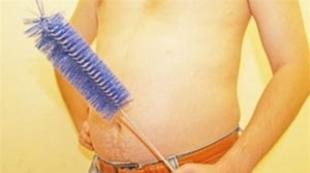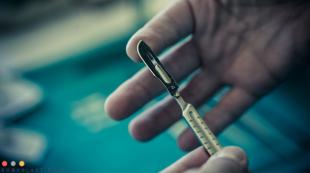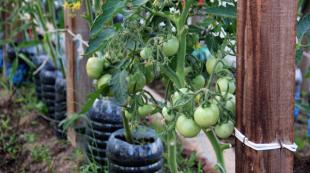Olympiad, logical and entertaining tasks in mathematics. Cutting tasks
13 . 0 3.201 8 G
Levochko A.V.
AbstractOOD FEMP
SUBJECT : "Division into equal parts"
Target : creating a social situation for the development of cognitive activity andclarification, expansion and activation of the vocabulary on the topic, development grammatical structure speeches.
Tasks:- Create conditionsforchildren's activities to learn the rulesdividing an object into equal parts;
- at exercise eniya in dividing an object into 8 equal parts by folding diagonally;skill developmentshow one part of eight, as well as 2/8, 5/8,8/8
Methods and techniques: visual, verbal, practical
Reading a poem"We shared an orange..."We shared an orange
There are many of us, and he is one.
This slice is for the hedgehog,
This slice is for a swift,
This slice is for ducklings,
This slice is for kittens,
This slice is for the beaver,
And for a wolf - a peel.
He is angry with us - trouble!
Run somewhere
What did the animals do?
Activation of children's speech.
Delili
Conditions for a friendly atmosphere and mood for the upcoming work.
Conditions for speech and mental activity.
Main part
Today we will learn how to divide an object into 8 equal parts.
And these squares will help us learn how to divide an object into 8 equal parts.
(Giving out squares)
Today we will learn a lot of new things! Watch carefully and listen to what I will do.
I have a paper square, I will fold it in half, trim the ends exactly, iron the fold line and cut along the fold line.
Into how many parts did I divide the square?
That's right, I folded the square once in half and divided it into 2 equal parts. Today we will divide objects into equal parts.
Are these parts equal? (I fold the square, convincing the children of the equality of its parts).
You get 2 equal parts. Here is one half of the square, and here is the other half(showing) . What are these parts like?
Guys, now you try to divide the square in half into 2 equal parts.
Well done. What did I show you? How many halves?
What is called half?
A half is one of 2 equal parts of a whole. Both equal parts are called halves. Each of the parts is called one half or half, because it was divided into two equal parts.
How did we get 2 equal parts?
And if I fold the square like this (not in half, how many parts did I divide it into?
Can these parts be called halves?
Why?
And now I will take one part of the square and divide it in half again. I will do the same with the other part of the square.(showing)
How many parts are there now?
Let's try to divide the two parts of the square in half.
When we divided a square into two equal parts, each part was called one half. We have now divided it into four parts. What is the name of each part? Each of the parts is called one fourth, therefore we divided the whole into four parts, this part is also called a quarter.
Now we will divide these 4 parts in half again.(showing)
Children perform.
How many parts are there now?
After the work is completed, the children are invited to show 1/8, 2/8, 5/8, 8/8 parts of the square.
How many parts did you divide the square into?
What is the name of one part?(one eighth)
2. Physical education
All hands pressed to the body
And jumps began to do.
And then they took off running
Like my bouncy ball.
Lined up again
It's like going to a parade.
One-two, one-two
It's time for us to get busy.
3. "Simulation of the subject"
Now let's make a showcase for the store, in which there will be toys.
What toys are sold in the store?
Children's answers.
Let's think about what kind of toy can be made from triangles.(showing examples of toys)
4. Mobile game"Find Your Half" .
Each child is given a half of a different size. On a signal, they must find a half equal to their half.
5. Outdoor game"Find Your Quarter" .
Each child is given a quarter of a different size. On a signal, they must find a quarter equal to theirs.
Children's answers
Children's answers
Children's answers
Children's answers
Children's answers
Children share.
Children's answers
Children's answers
Children's answers
Children's answers
Children's answers
Children's answers
Children's answers
Children's answers
Children's answers
Children's answers
Children's answers
Children's answers
Children's answers
Children's answers
Children's answers
Conditions for cognitive, speech, motor and creative activity. Activation of the speech of the passive and active vocabulary of children;
Reflectively evaluative
What occupation did we have?
What have we learned?
What have we been doing today?
What have you learned to do?
If an object is folded in half once, how many parts will it be?
What will be the parts?
What are their names?
How many times must an object be folded in half to make 4 equal parts?
You guys were great today!
Children's Suggested Responses
Children's answers
Children's answers
Children's answers
Oksana Mishunina
The division of objects into several equal parts. Abstract of a lesson in mathematics in senior group
Abstract of the lesson on F. E.M.P. in senior group"Cornflower"
Subject: Dividing objects into several equal parts
caregiver: Mishunina O. I.
Types of children's activities: playful, communicative, productive, cognitive-research.
Goals: To teach children to divide a whole into 2 and 4 equal parts by folding the object in half /(on 2 parts) and in half again (for 4 parts) ; teach to reflect action and results in speech division(folded in half, got 2 (4) equal parts, half of the whole, one of 2 parts, one of 4 parts); to give idea of that half is one of 2 equal parts of the whole; show the relationship between the whole and part(whole more parts, part is less than the whole); learn to answer with a full answer; improve the ability to see equal number different items.
Planned results: has elementary idea of dividing a number into parts, about geometric shapes, keeps in memory when executing mathematical actions the necessary condition and acts with concentration for 15-20 minutes, knows how to work collectively, participate in a mobile game actively interacts with the teacher and peers.
Materials and equipment: geometric figures.
Dispensing material: each child has a circle, 3 paper rectangles and 1 card. (On the cards any items in the amount of 3, 5, 7, 9 pcs. Drawings items located differently.)
Repetition of the past.
On the blackboard geometric figures: square, rectangle, circle. Repeat the names of the figures. Exercise: to find "extra" figure.
introductory part.
V-l: “Children, today we will learn a lot of new things! Look carefully and listen, What will i do. I got a paper strip, I'll fold it in half, exactly trim the ends, iron the fold line. How much parts I divided the strip? That's right, I folded the strip once in half and divided by 2 equal parts. Today we will share items in equal parts. Are these parts equal??»
The teacher folds the strip, convincing the children of its equality parts.
“We got 2 equal parts. Here is one half of the strip, and here is the other half. What did I show you? (Parts of the strip) How many halves (2)
"Half is one of 2 equal parts of the whole. Both are called halves equal parts. This is half and this is half of the whole strip. How many of these parts in a whole strip(2) how i got 2 equal parts? (bent in half) What more: whole strip or one of 2 its equal parts(whole) What smaller: a whole strip or one of its halves (Part) And if I fold the strip like this (not in half, how much parts I divided it? (2) Can these call parts halves(No) Why?" (they are not equal)
Main part.
V-l offers fold the circle in half once for the child.
"So, what did you do, what did you do?"(fold the circle in half, get a semicircle)
Color one half of the circle.
Gymnastics for the eyes.
"Vegetables"
The donkey walks chooses
He doesn't know what to eat first.
Plum ripened upstairs
And nettles grow below,
On the left - beets, on the right - swede,
On the left is a pumpkin, on the right is a cranberry,
Below is fresh grass,
Above - juicy tops.
Couldn't select anything
And without strength fell to the ground.
V-l asks questions:
"That more (smaller): whole circle or one of 2 equal parts(half of it?
V-l again offers fold the circle in half, and then 2 equal parts fold the circle in half again; divide paper rectangle by 2 equal parts and again in half.
How many times have the circle been folded in half (2) A rectangle (2) How much did it turn out parts(4) Are these parts equal?(Yes)
The child gestures to each of the 4 parts.
V-l: "That more (smaller): one of 4 parts whole or whole circle (a circle) How much did it turn out parts when we folded the circle 1 time in half (2) How much did it turn out parts when we folded the circle in half twice?" (4)
caregiver offers children fold the rectangle 1 time in half; reminds you that you need to fold exactly so that the sides and corners match.
Asking questions:
“What did they do? What happened? Are the parts equal?(equal) That more (smaller): half of a whole or a whole rectangle? (whole)
“What did they do? What happened?"
Children point their finger at each of the 4 parts.
Game moment.
Children are divided on rugs into 2 teams. Half circles lie in the middle different colors (yellow and pink). The task of each commands: who will collect the circles faster. One is pink, the other is yellow.
Final part:
V-l: What have you learned to do? If a thing fold in half once, how much parts will turn out? What will turn out parts? What are their names? How many times do you need to fold the item in half to get 4 equal parts?»
The teacher says that now the children will learn to select cards on which equally different items, and proposes to count, how many items drawn on their card. He further explains exercise:
“I will name the numbers, and those who have the same number drawn on the card items, come forward, stand in a row and show all the children their cards.
The teacher calls the numbers, the children go out, show the cards and say how many of which objects are painted on them. Sets question: "How much items drawn on the cards?
Well done boys. Everything worked well today.
In the evening I will go to the store for bread. I need half a loaf of bread. How the seller cuts a loaf of bread (Children: in half)
Summarize.
Guys, what did we do today?
What do you remember?
Lesson is over.
For the attention of tutors in mathematics and teachers of various electives and circles, a selection of entertaining and developing geometric cutting problems is offered. The purpose of using such tasks by a tutor in his classes is not only to interest the student in interesting and effective combinations of cells and shapes, but also to form in him a sense of lines, angles and shapes. The set of tasks is mainly aimed at children in grades 4-6, although it is possible to use it even with high school students. The exercises require students to have a high and steady concentration of attention and are great for developing and training visual memory. Recommended for math tutors preparing students for entrance exams to math schools and classes that place special demands on the level of independent thinking and creativity child. The level of tasks corresponds to the level of introductory Olympiads in the lyceum "second school" (second mathematical school), the small Mekhmat of Moscow State University, the Kurchatov school, etc.
Math tutor's note:
In some problem solutions, which you can view by clicking on the corresponding pointer, only one of the possible examples of cutting is indicated. I fully admit that you may get some other correct combination - do not be afraid of this. Check carefully the solution of your mouse and if it satisfies the condition, then feel free to take on the next task.
1) Try to cut the figure shown in the figure into 3 equal parts:
: Small figures are very similar to the letter T
2) Now cut this figure into 4 equal parts:

Math tutor hint: It is easy to guess that small figures will consist of 3 cells, and there are not so many figures of three cells. There are only two types of them: a corner and a 1 × 3 rectangle.
3) Cut this figure into 5 equal parts:

Find the number of cells that each such figure consists of. These figurines look like the letter G.
4) And now you need to cut the figure of ten cells into 4 unequal rectangle (or square) to each other.

Indication of a tutor in mathematics: Select a rectangle, and then try to enter three more in the remaining cells. If it doesn't work, then change the first rectangle and try again.
5) The task becomes more complicated: you need to cut the figure into 4 different in shape figures (not necessarily into rectangles).

Math tutor hint: first draw all kinds of shapes separately different shapes(there will be more than four) and repeat the method of enumeration of options as in the previous task.
:
6) Cut this figure into 5 figures of four cells of different shapes so that only one green cell is painted in each of them.

Math Tutor Tip: Try to start cutting from the top edge of this shape and you will immediately understand how to proceed.
:
7) Based on the previous problem. Find how many shapes there are various shapes consisting of exactly four cells? The figures can be twisted, rotated, but it is impossible to raise the sostole (from its surface), on which it lies. That is, the two given figures will not be considered equal, since they cannot be obtained from each other by rotation.

Math Tutor Tip: Study the solution of the previous problem and try to imagine the different positions of these figures when turning. It is easy to guess that the answer in our problem will be the number 5 or more. (In fact, even more than six). There are 7 types of described figures in total.
8) Cut a square of 16 cells into 4 equal parts so that each of the four parts has exactly one green cell.
Math tutor hint: The appearance of small figures is not a square or a rectangle, and not even a corner of four cells. So what shapes should we try to cut into?
9) Cut the depicted figure into two parts so that a square can be folded from the resulting parts.

Math tutor hint: In total, there are 16 cells in the figure, which means that the square will be 4 × 4 in size. And somehow you need to fill the window in the middle. How to do it? Maybe some kind of shift? Then, since the length of the rectangle is equal to an odd number of cells, cutting should be done not with a vertical cut, but along a broken line. So that the upper part is cut off on one side from the middle cells, and the lower part on the other.
10) Cut a 4×9 rectangle into two parts so that as a result you can add a square from them.

Math tutor hint: There are 36 cells in the rectangle. Therefore, the square will be 6 × 6 in size. Since the long side consists of nine cells, three of them need to be cut off. How will this cut go?
11) The cross of five cells shown in the figure needs to be cut (you can cut the cells themselves) into such parts from which a square could be folded.
Math tutor hint: It is clear that no matter how we cut along the lines of the cells, we won’t get a square, since there are only 5 cells. This is the only task in which it is allowed to cut not in cells. However, it would still be good to leave them as a guideline. for example, it is worth noting that we somehow need to remove the recesses that we have - namely, in the inner corners of our cross. How would you do it? For example, cutting off some protruding triangles from the outer corners of the cross...
Sections: elementary School
The objectives of the lesson: to introduce the ways of dividing a circle into equal parts; develop graphic skills, creative thinking; cultivate curiosity, accuracy.
Methodological goal: the formation of components of the research culture of students, the development of cognitive independence.
Equipment:
writing on the board
table “Division of a circle into 6.3 parts”
geometric figures
blanks - circles,
stripes are individual.
During the classes
I. Organizational part
II. Verbal counting
1. Expressions.
We continue our acquaintance with the celebrities of the Belgorod region.
– Poet, friend of A.S. Pushkin, the first “Decembrist”. Born in with. Khvorostyanka Gubkinsky district. Who is he?
Find out the name of this person by calculating the value of the expression:
20 - Lomakin
12 - Raevsky
11 - Degtyarev
– Journalist, writer, was born in the town of Korocha. A well-known researcher of the life and work of A.S. Pushkin:
50 - Bokarev
16 - Stankevich
27 – Hesse
– Actor, friend of A.S. Pushkin. The regional theater bears the name of this man:
56 - Shchepkin
32 - Vatutin
10 - Shukhov
2. Drawing up and solving problems on a short note.
3. Geometric figures today - my assistants on the mental account. Let's solve circular examples.
4. How many figures do you see on the poster (6)
– Check (on the reverse side - colored outlines)
III. Mathematical dictation on strips.
(write down answers only)
We repeat the units of measurement for length.
The height of the house is 15 m. Express this in dm.
The skier ran a distance of 1 km. How much is m.
Human height 1m.70cm. Express in cm.
The length of the ant is 1cm.3mm. How many mm.
Find the length of a broken line consisting of 4 links of 3 cm.
From home to school 1000m. How many km.
Birch height 150 dm. Express it in m.
(Submit for verification)
IV. Preparing to learn new material
Look at the row of figures
Which figure has the most names? (list)
What figure is missing? Why?
V. Communication of the topic, objectives of the lesson.
– Today we will work with this figure and with a circle. We will learn to divide them into equal parts.
VI.
What can you compare a circle to?
We know the circle has one girlfriend
Its circumference is familiar to all.
She walks along the edge of the circle
And it's called a circle
What can a circle be compared to?
Let's get up and make a circle.
VII. Fizminutka in a circle.
VIII. Work on new material.
- Practice with circles.
- Bend the circle along one of its axes of symmetry. Expand. What did you notice?
- The circle is divided into 2 equal parts. So the circle is divided into 2 equal parts.
- We can say that if the circle is divided into 2 equal parts, then the circle is divided into 2 equal parts.
- We check our conclusion from the textbook.
- Can you guess how to divide a circle into 4 equal parts? (fold over again)
- Expand the circle, count. How many axes of symmetry are there in the circle? (2)
Take the squares, determine how many right angles were formed when the circle was bent? (4)
We once again made sure that the circle was divided into 4 equal parts. What is the side of a right angle in a circle? (radius)
- If the circle is divided into 4 equal parts - the circle is divided into 4 equal parts?
How can this be proven? (edges match)
Consolidation. - Independent work.
B1 - No. 226 (t), B2 - No. 225 (t)
The student of the second option works at the blackboard.
Examination
IX. Division of a circle into 6.3 parts.
1) Textbook p.71.
- How many points are marked on the circle?
- How many parts is the circle divided into?
- Measure the length of the radius and the distance on the circle between two adjacent points. What did you notice?
- Check if all distances between adjacent points are the same along the entire circle.
- Can we say that the circle is divided into 6 equal parts?
2) Fixing.
Let's try to divide the circle into 6 equal parts.
In a small notebook.
1) we build a circle;
2) without changing the radius, put points;
3) Work with the table.
The circle is divided into 6 equal parts. Who can guess which of these points divide the circle into 3 equal parts?
We select points through one.
So the circle is divided into 3 equal parts.
X. I'm glad you learned how to divide a circle into equal parts.
Where in life can you apply this knowledge?
Who among you loves crafts?
On the “Fantasy” mug you make beautiful crafts. Today you have the opportunity to work with “magic circles” and come up with your own unique pattern or appliqué.
To the music: cut the circle into 6 parts and get to work.
XI. Summary of the lesson.
XII. Homework.
B1 No. 229 (notebook) No. 276 (textbook); B2 No. 229 (notebook) No. 230 (notebook) - commenting on assignments.









